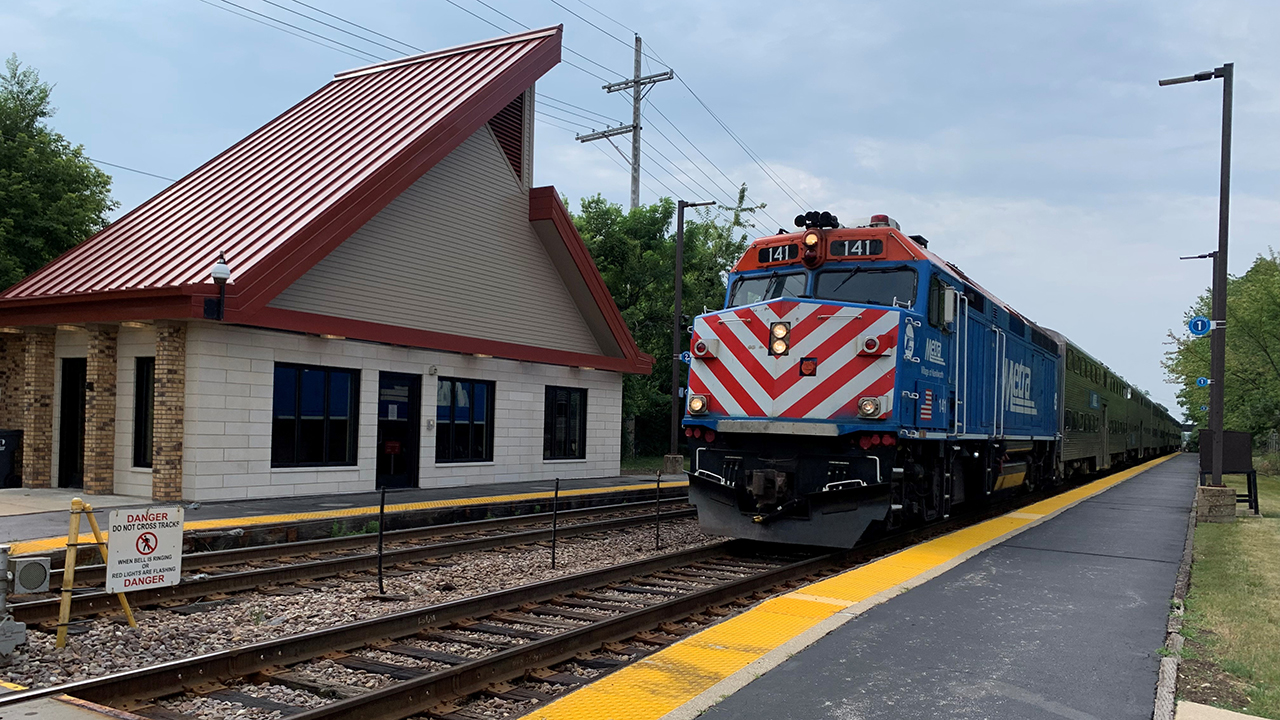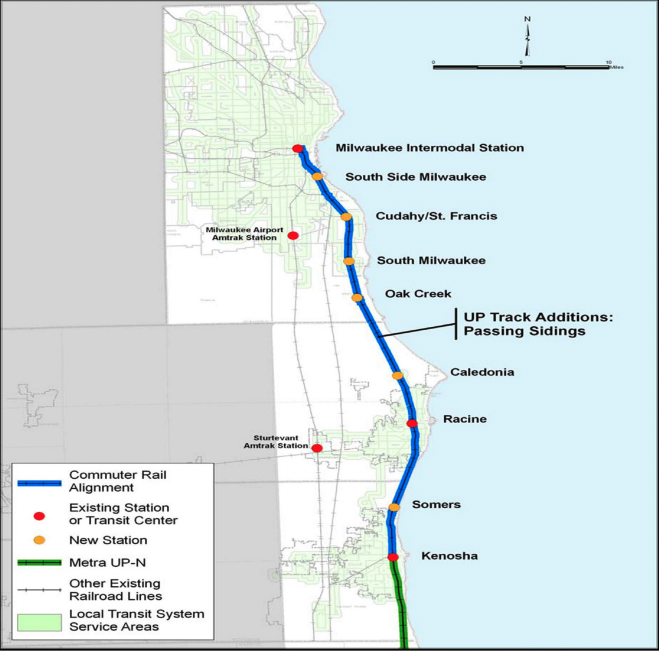
Proposed Kenosha-Racine-Milwaukee Commuter Rail Project Receives State Support
Written by Carolina Worrell, Senior Editor
The proposed KRM project would provide a connection to Metra’s UP-N commuter rail line in Kenosha.
On Aug. 16, the Federal Transit Administration (FTA) released a two-page profile of the long-stalled Kenosha-Racine-Milwaukee (KRM) Commuter Rail project highlighting the state of Wisconsin’s support of the proposed $460 million rail service.
According to the profile, the Wisconsin Department of Transportation (WisDOT), in conjunction with the Wisconsin Transit & Realty Group, LLC (WTRG), proposes to implement commuter rail service along a 33-mile existing, active freight rail corridor from downtown Kenosha, Wisc., continuing through Racine and on to the Milwaukee Intermodal Station (MIS) in downtown Milwaukee. The line is expected to serve nine stations—three existing and six new—and provide a connection to Metra’s Union Pacific-North (UP-N) commuter rail line in Kenosha.
In the profile, WisDOT states that it “believes the project will improve regional transit mobility and access in Southeastern Wisconsin, especially for transit-dependent populations by connecting currently disjointed transit systems and providing a transit alternative to the congested I-94 corridor,” and that it wants to have a locally preferred alternative (LPA) adopted into the region’s “fiscally constrained” long-range transportation plan by January 2023.

According to the document, the project corridor runs along the western shore of Lake Michigan parallel to, but east of Interstate 94 (I-94) and includes upgrading the track to allow operating speeds up to 79 mph, constructing up to three 10,000-foot passing sidings, implementing positive train control (PTC) throughout the corridor, and upgrading grade crossings along the route with quadrant gates and signaling. The project also includes construction of a maintenance facility, rehabilitation/replacement of various bridges, and use of hydrogen-powered rail vehicles. Bi-direction service, WisDOT says, is intended to be provided initially only on weekday peak-periods, with off-peak and weekend service to be added in the future.
WisDOT states in the profile that it anticipates start of revenue service to be in mid-2026.
In a statement to WUWM-FM, WisDOT said that it was sponsoring the project on behalf of WTRG per FTA rules, which require private entities to have a public sponsor when “intending to apply for federal funds.” The statement also noted that there are no state funds associated with the project and that all costs will be covered by WTRG. The application, WUWM-FM reports, was a request for entry into the Project Development Phase of FTA’s Capital Investment Grant Program.
WUWM-FM also reported that WTRG, which plans to own and operate the commuter rail service, does not have a fully set up website, and listed phone numbers do not appear to be working.
According to Trains, the proposed KRM commuter rail line first began receiving consideration in 2008 after a study by the Southeastern Wisconsin Regional Planning Commission deemed the project feasible. Additional studies were conducted between 2005 and 2011 by the planning commission, and again in 2009 by the Southeastern Regional Transit Authority, Trains reports, adding that “legislation creating the transit agency was repealed in 2011, but some of the material it produced remains available on an archived website.”



